Herring Gull Larus
argentatus
These
three different Herring Gulls were photographed at
The gulls
in this page differ from most of the gulls on the aforementioned websites in
their small, argenteus-like size and
structure. Although these could be all females they do not show the large and
bulky posture of northern argentatus as in this page and this page. And instead of
these bird showing any hyperboreus-influences
in structure (which is the least one would expect from a hybrid) they look very
Herring Gull. Typically these pale gulls always seem to turn up in these parts
in February and March, whilst argentatus arrives from October onwards.
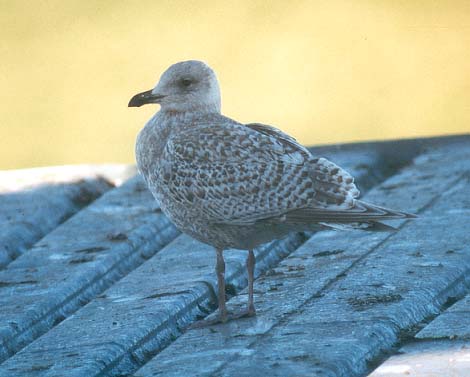
This first bird was photographed on 15 February. The same bird appears
in the more sunny picture below. The bird was rather
small but must be a true argentatus since is has retained almost all
juvenile scapulars. Apart from pale(-tipped) primaries
this bird also shows pale tertials. Although the upper tertial has a different
pattern than the lower ones I don't think its 2nd generation. Note that the 2nd
bird in this page (below the bar) shows exactly the same tertial patterns. In flight
this bird showed a sandy but solid dark tailband,
unlike the 2nd bird. Apart from its paleness the pattern on the wingcoverts is
typical for Herring Gull.
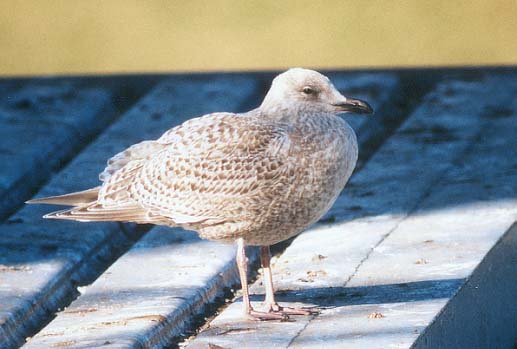
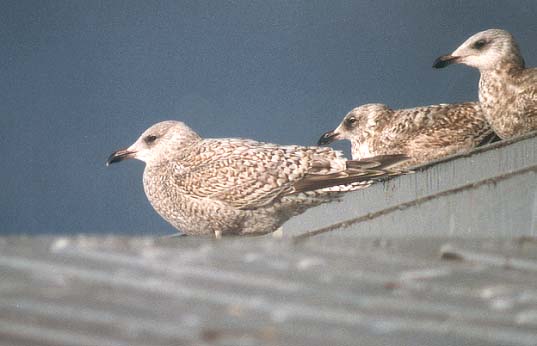 This second
bird was photographed on 19 February and is very intriguing indeed. Although
its overall structure is very Herring Gull (and therefore an unlikely hybrid)
the patterns on its breast, belly and tail (see the picture below) are unlike
any HG I've seen so far. Note that this bird seems to show 2nd generation
scapulars but does not show 2nd generation greater wingcoverts; there are
merely two feathers out of position.
This second
bird was photographed on 19 February and is very intriguing indeed. Although
its overall structure is very Herring Gull (and therefore an unlikely hybrid)
the patterns on its breast, belly and tail (see the picture below) are unlike
any HG I've seen so far. Note that this bird seems to show 2nd generation
scapulars but does not show 2nd generation greater wingcoverts; there are
merely two feathers out of position.
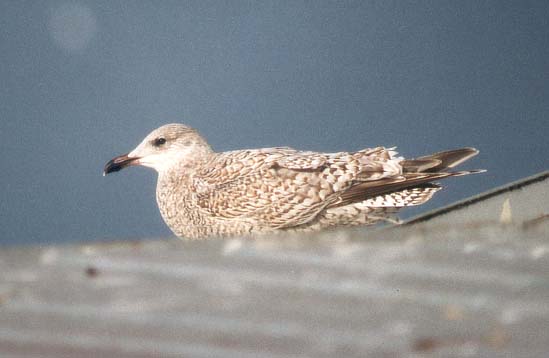
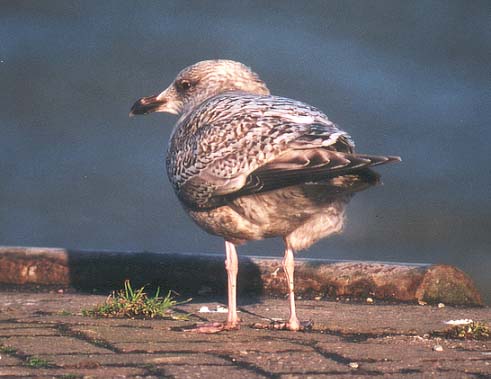 This third
bird was photographed on 7 March and however least convincing in its
appearance, it may form a sort of 'missing link' between the type of HG's above and HG,s with merely
(vague) pale tips to their primaries. The same bird appears in the picture below.
This third
bird was photographed on 7 March and however least convincing in its
appearance, it may form a sort of 'missing link' between the type of HG's above and HG,s with merely
(vague) pale tips to their primaries. The same bird appears in the picture below.
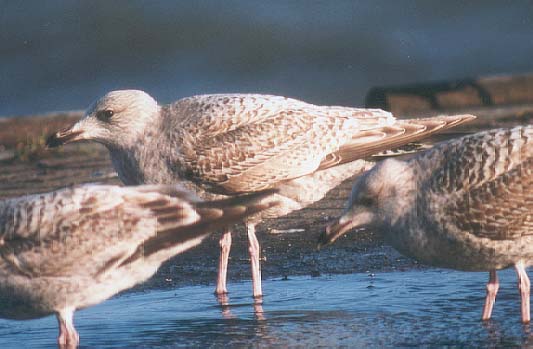
Back to the gull-index
Back to the main page